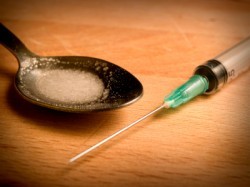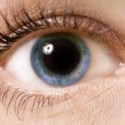Signs of Heroin Addiction You Can’t Ignore
Heroin is an opioid that they make from the opiate morphine. It is a synthetic form of the pain killer that originally came from the opium poppy in Asia. Heroin is typically a white or brown powder or in the case of Black Tar Heroin, it is a black sticky substance resembling tar. According to the National Institute on Drug Abuse, over 4 million Americans have used heroin at least once.
Since heroin is so prevalent in the United States, it is important to know the signs of heroin addiction. If you are using chances are you are addicted to it. There are physical, psychological, and social signs that you are either addicted or becoming addicted to heroin.
Signs of Heroin Use
When someone is using heroin they experience the side effects of the drug. These side effects, although not a sign of addiction, are a good indicator that the person is at the very least using heroin. The physical signs are:
- sudden reduced pain,
- nausea,
- drowsiness, heroin is a sedative,
- slowed breathing, and
- lower than normal body temperature.
These signs are normal when someone is actively using. When someone is in withdrawal from heroin, they show the signs of it. The signs of heroin withdrawal are:
- muscle cramps,
- dilated pupils,
- lethargy,
- runny nose,
- perspiration,
- rapid heart rate,
- nausea,
- lack of appetite,
- insomnia,
- joint or muscle pain, and
- diarrhea.
These symptoms all are due to the heroin leaving the body. In times of extreme withdrawal, these symptoms are very severe. They can be debilitating if not treated, although they are rarely fatal.
Many of the psychological signs of heroin use are signs of both addiction and just using the drug. These psychological signs are:
- euphoria,
- depression,
- reduced anxiety, and
- seeming lethargic or slow.
Of course there are also psychological signs of withdrawal. For the most part these are opposite reactions to using heroin. These psychological signs of withdrawal are:
- depression,
- anxiety,
- irritability, and
- insomnia.
Many of these signs are also signs of addiction. Generally if someone is experiencing withdrawal symptoms, there is a good chance they are addicted to heroin.
Physical Signs of Heroin Addiction

Heroin addiction can cause a variety of changes in appearance.
People who are addicted to heroin show physical signs of the addiction. These physical signs happen as they continue using the drug. The most common signs are:
- changes in appearance such as:
o dramatic weight loss,
o appearance of starving,
o dramatic weight gain,
o unusual pupil dilation,
o track marks or scaring around the elbows or other popular injection sites.
o pale skin, and
o pasty unhealthy skin,
- Digestive symptoms:
o nausea,
o frequent vomiting,
o low or no appetite,
- Neurological symptoms:
o tremors,
o shaking,
o twitching, and
o restlessness.
All of these signs are visible when someone is addicted to heroin. As the addiction continues these signs get worse. Most people who first start using can hide these signs with make-up, eye drops, and other methods. The psychological signs are not as easy to hide.
Psychological Signs of a Heroin Addict
The psychological signs of a heroin addict start very subtle but gradually grow to being very noticeable. The majority of these symptoms become uncontrollable as use and the addiction grow. A few of these signs are:
- unexplained mood swings,
- unexplained general anxiety particularly when they do not have the drug,
- lack of interest in activities they used to enjoy,
- skipping activities they normally would go to due to depression or other mental issues,
- unusually hostile moods,
- apathy or a “don’t care,” attitude,
- obvious euphoria,
- drug seeking behavior such as making up unexplained illnesses,
- lack of hygiene or unkempt physical appearance, and
- lack of motivation.
These psychological effects are often accompanied by behavioral and social changes.
Behavioral Signs of Addiction to Heroin
The behavioral signs of heroin addiction are usually obvious. A few of these signs you should know about are:
- changes in habits – heroin addicts often change their routines and habits. As their life is consumed by the cycle of using and obtaining the drug, they start to show do things that fit that pattern.
- frequent trips to the bathroom – heroin users generally need a private place to do the drug. This private place is often the bathroom.
- secretive behavior – people using any drug frequently tend to become very secretive. They might have a second cell phone, take calls at odd times, or leave suddenly without letting you know where they are going.
- refusing to talk – addicts do not like to talk about their behavior. They become angry or irritable when you question their motives or the way they are acting.
- changes in friends or job – addicts miss work due to their addiction, they also make mistakes at work. Both of these things lead to job changes. They will also start to befriend others that use drugs or deal them. They might stop hanging around those who do not use drugs.
Most addicts begin with subtle changes and move towards other more permanent ones. According to the National Library of Medicine’s publication Brief Interventions and Brief Therapies for Substance Abuse, the person does not need to want to stop using drugs. An intervention or forced rehabilitation sometimes works although it is easier if they want to stop using on their own. Recognizing the signs of heroin addiction, is the first step to helping someone overcome their addiction.










